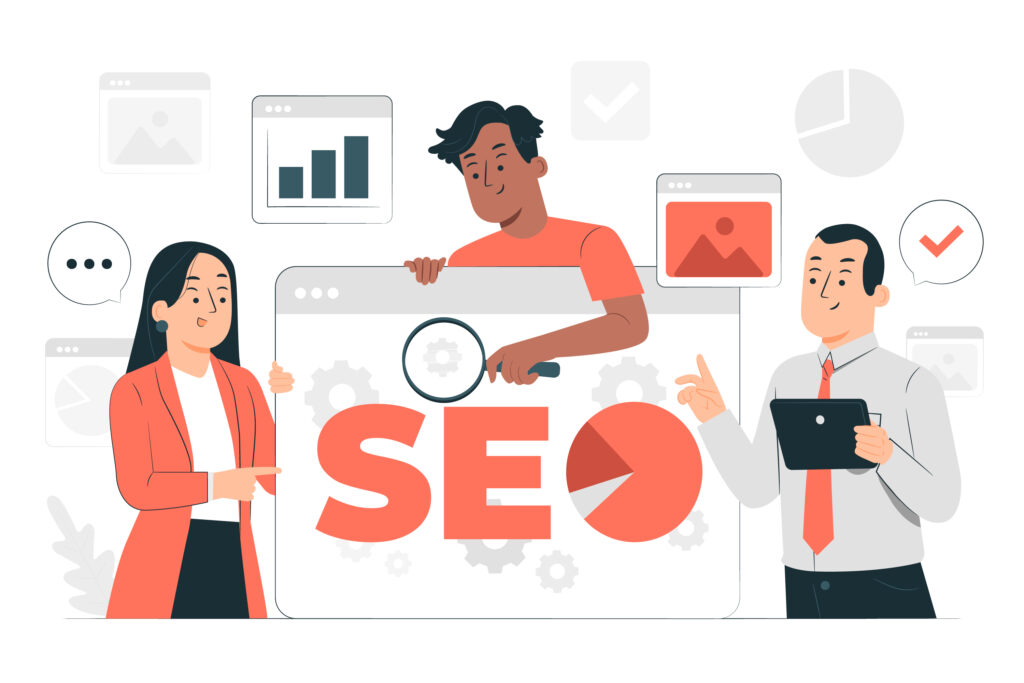B2B SaaS SEO refers to the use of Search Engine Optimization (SEO) techniques in the context of Software as a Service (SaaS) businesses. SaaS companies offer their services through web-based applications that customers access over the internet, and therefore, need to rank highly in search engine results pages (SERPs) to attract and retain customers.
SaaS SEO involves optimizing a SaaS company’s website and content to improve its visibility and ranking in search engine results pages, drive more organic traffic, and ultimately increase revenue. It typically involves keyword research, on-page optimization, link building, and content creation, among other SEO strategies and tactics.
Effective SEO can help SaaS companies differentiate themselves from competitors, increase brand awareness, and ultimately drive more conversions and revenue.
The Importance of SEO for SaaS
SEO is important for SaaS companies for many reasons. With effective SEO strategies, a SaaS company can improve its ranking in SERP (search engine result pages) and attract more organic traffic. SEO is a cost-effective way of attracting prospects to the website. Effective SEO can help a SaaS company stand out from its competitors in a crowded market. This can result in more leads, conversions, and revenue.
As a software-as-a-service (SaaS) business, your online visibility is crucial to your success. One of the best ways to improve your online visibility is through search engine optimization (SEO). But with so many different strategies and tactics out there, it can be overwhelming to know where to start. That’s why we’ve put together this ultimate guide to SaaS SEO best practices, outlining the do’s and don’ts to help you optimize your website for search engines and attract more potential customers.
Do: Conduct Keyword Research
Keyword research is the foundation of any successful SEO strategy. By identifying the keywords and phrases that your target audience is searching for, you can optimize your website content to rank higher in search engine results pages (SERPs). There are many keyword research tools available, such as Google Keyword Planner and SEMrush, that can help you identify relevant keywords and their search volume. When conducting keyword research for SaaS, consider using long-tail keywords that are more specific to your industry and product. For example, instead of targeting “CRM software,” target “cloud-based CRM software for small businesses.”
Don’t: Stuff Keywords
While incorporating keywords into your website content is important, overusing them can actually hurt your SEO efforts. Keyword stuffing, or the practice of using a high number of keywords in an attempt to manipulate search engine rankings, is now penalized by search engines and can result in a lower ranking. Instead, focus on using keywords naturally throughout your content and in strategic places such as page titles, headings, and meta descriptions.
Do: Optimize On-Page Elements
On-page elements such as title tags, meta descriptions, and header tags are important factors in SEO. By optimizing these elements with relevant keywords and phrases, you can signal to search engines what your website is about and improve your chances of ranking higher in SERPs. When optimizing on-page elements, keep in mind that they should be concise, informative, and relevant to the content on the page.
Don’t: Use Duplicate Content
Using duplicate content, or content that appears on multiple pages of your website or on other websites, can harm your SEO efforts. Search engines prioritize unique, high-quality content and penalize websites that use duplicate content. To avoid this, create original content that is tailored to your target audience and focuses on topics relevant to your industry and product.
Do: Build High-Quality Backlinks
Backlinks, or links from other websites that point to your website, are an important factor in SEO. When other websites link to your content, it signals to search engines that your website is authoritative and trustworthy. To build high-quality backlinks, focus on creating content that is shareable and valuable to your target audience. You can also reach out to other websites and offer to guest post or collaborate on content.
Don’t: Buy Backlinks
Buying backlinks, or paying for links to your website from other sites, is a black-hat SEO tactic that can harm your website’s ranking. Search engines prioritize natural, organic backlinks and penalize websites that use manipulative tactics such as buying links. Instead, focus on creating high-quality content that naturally attracts backlinks from other websites.
Do: Use Social Media
While social media may not directly impact your website’s SEO, it can indirectly improve your online visibility and drive traffic to your website. By sharing your content on social media platforms such as Twitter, LinkedIn, and Facebook, you can reach a wider audience and attract potential customers to your website.
Don’t: Ignore Mobile Optimization
With more and more users accessing the internet from their mobile devices, mobile optimization has become a crucial aspect of SEO. If your website isn’t optimized for mobile devices, you could be missing out on potential customers and hurting your SEO efforts. To optimize your website for mobile devices, ensure that it is responsive and that it loads quickly. You can also consider implementing AMP (Accelerated Mobile Pages) to improve your website’s mobile speed.
Do: Monitor Your Analytics
To track the effectiveness of your SEO efforts, it’s important to monitor your website’s analytics regularly. Tools such as Google Analytics can provide valuable insights into your website’s traffic, user behavior, and search engine ranking. By monitoring your analytics, you can identify areas for improvement and adjust your SEO strategy accordingly.
Don’t: Ignore Local SEO
If your SaaS business targets a specific geographic area, local SEO is crucial to your success. Local SEO involves optimizing your website and online presence for local search results. This includes claiming and optimizing your Google My Business listing, creating local content, and building local citations. By focusing on local SEO, you can improve your chances of appearing in local search results and attracting potential customers in your area.
Do: Stay Up-to-Date with SEO Trends
SEO is constantly evolving, with new trends and tactics emerging all the time. To stay ahead of the curve and ensure that your SEO efforts remain effective, it’s important to stay up-to-date with the latest SEO trends and best practices. This includes following industry experts and publications, attending SEO conferences and events, and staying informed about search engine algorithm updates.
By following these dos and don’ts of SaaS SEO best practices, you can optimize your website for search engines and attract more potential customers to your business. Remember to conduct keyword research, optimize on-page elements, build high-quality backlinks, use social media, monitor your analytics, and stay up-to-date with the latest SEO trends. And, most importantly, avoid black-hat SEO tactics such as keyword stuffing and buying backlinks, which can harm your website’s ranking and reputation.
Get in touch with the Gignaut team today to start measuring and improving your marketing efforts.
Check our SaaS SEO Handbook to learn more.
Uzma is a Professional Content Writer and Certified Digital Marketing Expert




